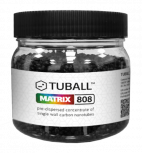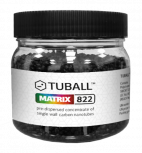Graphene nanotubes for glass fiber filled polyamide compounds: conductivity and maintained mechanical properties

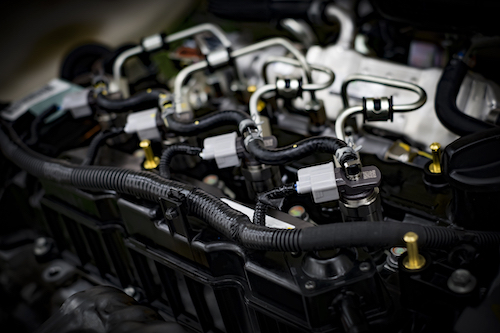
TUBALL™ graphene nanotubes in the form of TUBALL™ MATRIX 822 and TUBALL™ MATRIX 808 are a versatile conductive additive based on polyol ester carrier. They have been specifically designed to provide superior electrical conductivity to thermoplastic materials, while retaining mechanical properties and keeping the MFI level of the glass fiber filled compound.
TUBALL™ MATRIX 822 incorporates in 2 steps and allows to produce masterbatches based on PA. Resulting masterbatches can be used for compounding in filled polymers or in combination with other conductive fillers to reduce their content and gain better mechanical properties and fluidity.
TUBALL™ MATRIX 808 has a smaller graphene nanotubes content and can be incorporated just in one step – direct compounding.
CONDUCTIVE ADDITIVES FOR GLASS FIBER FILLED PA: TRADITIONAL VS TUBALL™
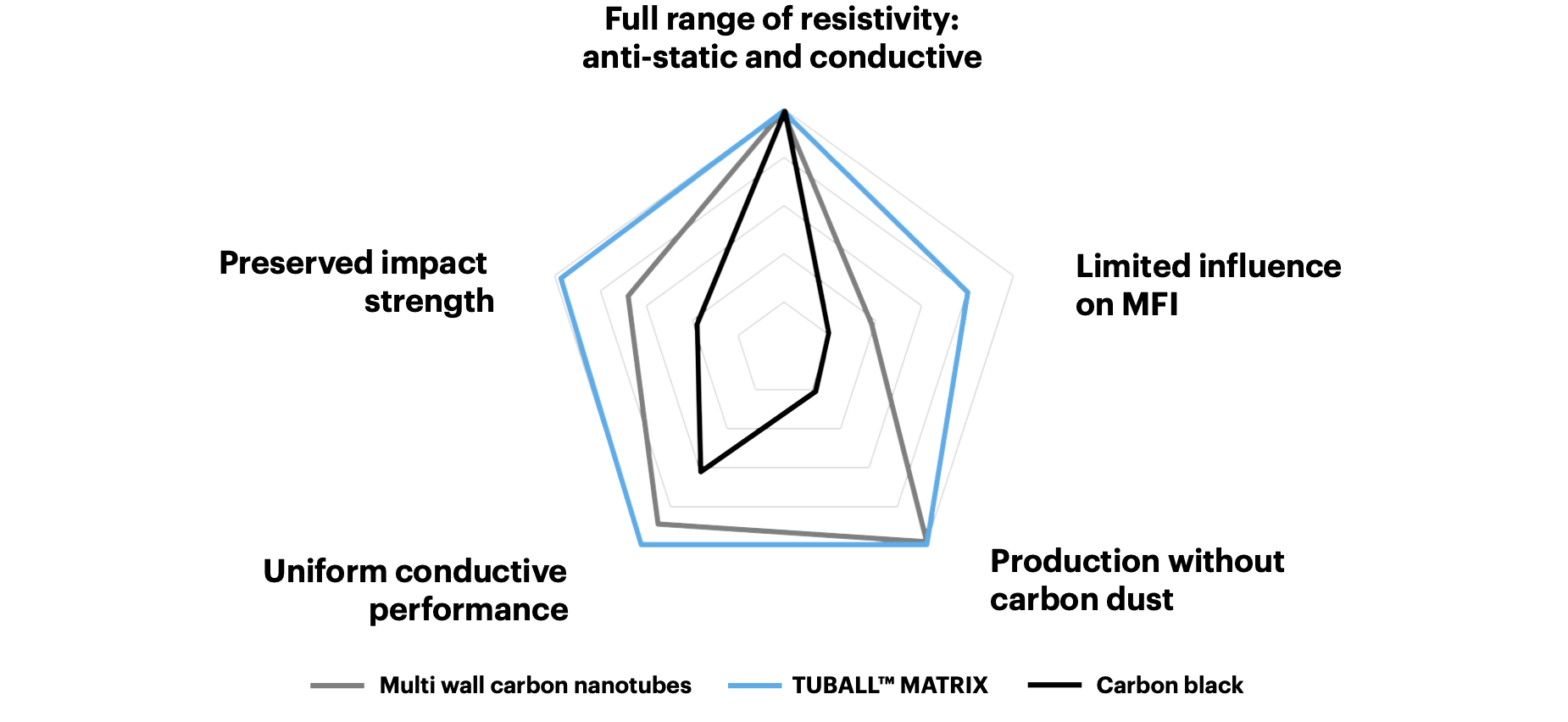
Note. This diagram is based on an average trends compared with other additives based on OCSiAl data. Product performance may vary depending on product type and formulation.
High-quality conductive polyamide compounds are used for manufacturing automotive fuel lines, connectors, pumps, air systems, self-contained self-rescuers for coal miners, gas station pistol grips, door handles, various construction parts, and ESD products for ATEX areas such as in the oil and gas, chemical, and electronics industries, etc. Another application of nanotube-enhanced PA parts is e-painting of automotive car parts.
Benefits provided by TUBALL™ nanotubes for GF-filled PA:
- Ultra-low dosage starting from just 0.05 wt.% TUBALL™ graphene nanotubes*
- Maintains good balance of mechanical properties
- Enables a new combination of GF-filled PA properties in comparison to standard conductive agents
- Permanent, stable and uniform electrical resistivity without “hot spots”
- Stable performance reducing the number of out-of-spec parts
- Good processability and easy handling
- Allows production of conductive parts that retain colors
*Dosages may vary depending on the formulation, processing, and products.
FULL RANGE OF RESISTIVITY
Graphene nanotubes’ unique morphology allows them to create a dense conductive network inside thermoplastic compounds at ultra-low loading rates—starting from just 0.05 wt.% in the total compound.
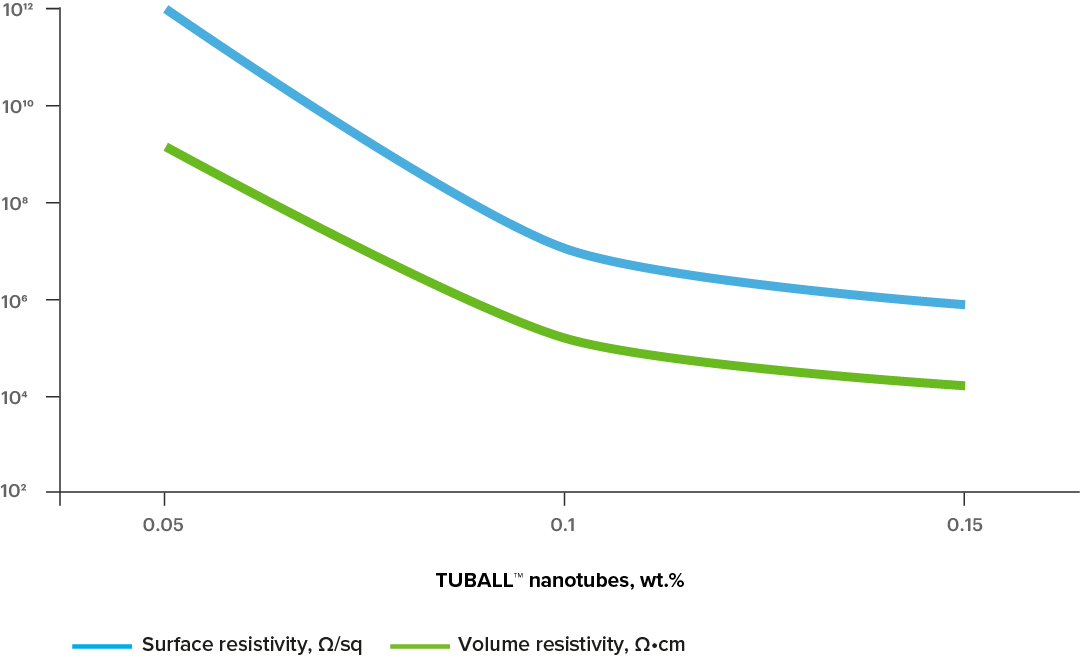
30% glass fiber filled polyamide compounds. Injection molded samples. Surface resistivity: ASTM D257. Volume resistivity: ASTM D4496.
MAINTAINED MECHANICAL PROPERTIES
The usage of TUBALL™ MATRIX preserves key mechanical properties in comparison to other conductive additives.

30% glass fiber filled polyamide-6 compounds. Injection molded samples. TUBALL™ was applied via TUBALL™ MATRIX 822. Impact strength: ISO 179; Tensile performance: ISO 527; Flexural performance: ISO 178.
EASY TO APPLY WITH STANDARD EQUIPMENT
TUBALL™ MATRIX can be processed with standard equipment widely used in the thermoplastics industry.
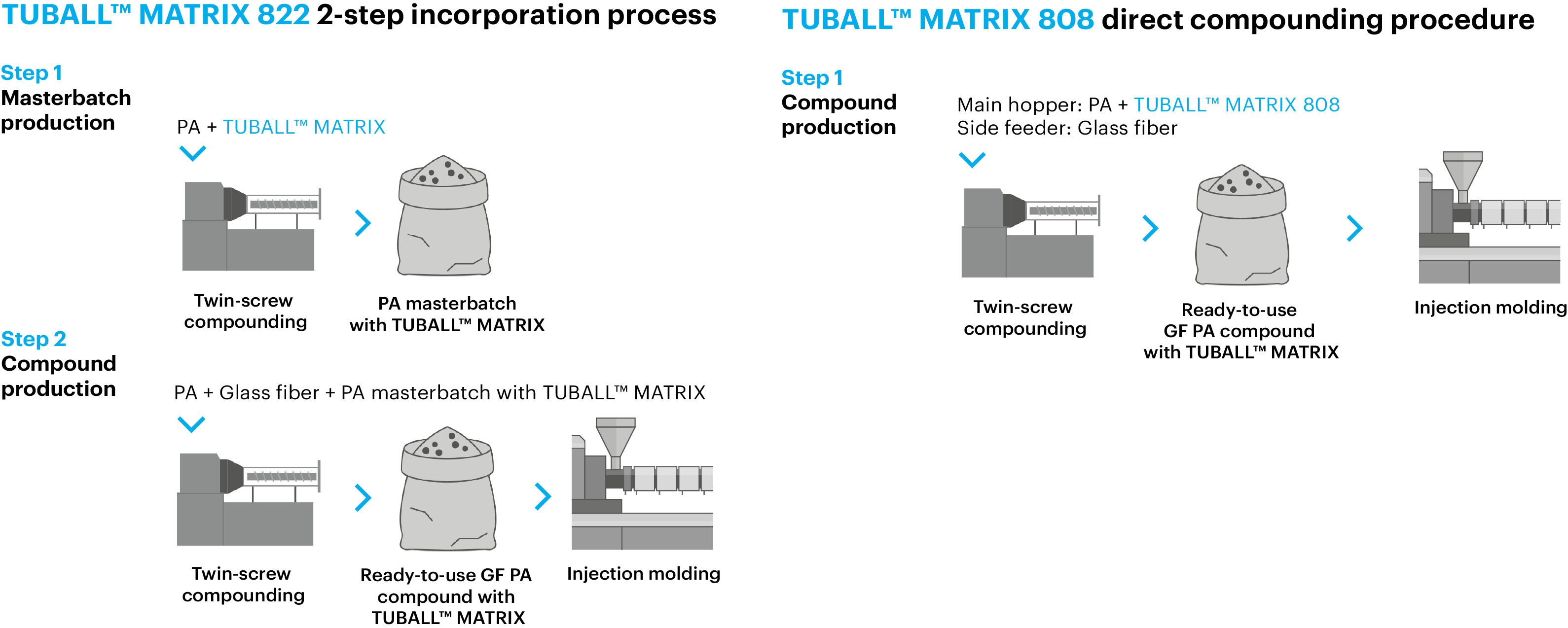
PA enhanced with TUBALL™ graphene nanotubes has found wide usage in the automotive e-painting, automotive safety, ESD materials and ATEX applications.
Pay close attention to the processing guidelines for TUBALL™ MATRIX
Download PDF version:
Application case

E-painting
TUBALL™ MATRIX for glass fiber filled polyamide
Additional information
How to grant conductivity to glass fiber reinforced polyamide: compounding guide
Contact us to discuss your project specifications or to request a TUBALL™ MATRIX sample
